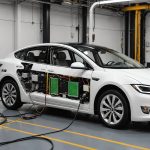Overview of In-Car Technologies Expected by 2024
The automotive landscape is on the brink of a revolutionary shift, with various in-car technologies set to redefine the driving experience by 2024. As the UK market trends toward adopting smarter and more efficient systems, these automotive innovations are not just optional but integral to the vehicle’s evolution.
1. Connected Vehicles: Enabling seamless interaction between vehicles and infrastructure, connected vehicles can enhance safety and efficiency. This technology is expected to grow exponentially, providing both convenience and improved traffic management.
This might interest you : Essential Legal Guidelines for Towing a Caravan on UK Roads: What You Need to Know
2. Autonomous Driving Features: While fully autonomous cars are still on the horizon, features like lane-keeping assistance and adaptive cruise control are becoming mainstream. The UK market is particularly keen on adopting these technologies, reflecting a consciousness toward safer and more relaxing travel.
3. Electric and Hybrid Powertrains: With an emphasis on sustainability, electric and hybrid vehicles are forecasted to dominate. Battery advancements are set to increase vehicle range, making these choices practical for more drivers in the UK.
Have you seen this : Discover the Best Electric Vans for Businesses in the UK: Top Picks for 2023
Incorporating these innovations, the UK automotive industry anticipates a robust growth in technology adoption rates, reflecting the importance of a modern, engaging driving experience. These changes urge consumers and manufacturers alike to embrace advancements that promise a future of increased efficiency, safety, and enjoyment on the road.
Advanced Driver Assistance Systems (ADAS)
Advanced Driver Assistance Systems (ADAS) represent a significant leap forward in vehicle technology, poised to enhance safety and comfort for drivers. By 2024, ADAS is expected to incorporate a range of key features that promise to redefine driving experiences. These features include adaptive cruise control, lane-keeping assistance, and collision warning systems. Such enhancements prioritize driver assistance and aim to mitigate common road risks.
The profound impact of ADAS on vehicle safety cannot be overstated. These systems have already demonstrated their capacity to significantly reduce accidents by alerting drivers to potential hazards and, in certain scenarios, taking control to avoid collisions. As the technology advances, the expectation is that these safety features will lower accident rates even further, reinforcing their critical role in accident reduction.
Looking ahead, innovative trends in autonomous driving technology within ADAS are unfolding. The integration of machine learning algorithms and improved sensor capabilities suggests a future where vehicles may handle complex driving scenarios autonomously. This evolution marks a notable stride toward higher levels of vehicle autonomy, ultimately aiming for fully autonomous vehicles.
The continued development and implementation of ADAS underscore the commitment of the automotive industry to provide safer, more efficient driving solutions. As these systems become more sophisticated, the safety features within ADAS are set to play a pivotal role in shaping the future of transportation.
Connectivity and Infotainment Systems
In today’s automotive world, vehicle connectivity is no longer a luxury but a necessity. Modern infotainment features have evolved significantly, with a strong focus on integrating smart technology to enhance driving experiences.
Over the years, infotainment systems have become more sophisticated, moving from basic radio and CD players to fully-fledged multimedia hubs. These systems now offer seamless integration with mobile devices, allowing users to sync smartphones and access apps directly from their vehicle’s dashboard. This integration not only improves accessibility but also ensures that drivers and passengers can enjoy a continuous digital lifestyle on the go.
The user interface of these systems has seen notable advancements. Touchscreen technology has improved significantly, offering high responsiveness and clarity. Moreover, customization options have expanded, enabling drivers to tailor settings such as shortcuts and themes to personal preferences, ensuring an intuitive and personalized environment.
Improved connectivity has greatly impacted the user experience by facilitating easier data sharing. For instance, vehicles can now provide real-time traffic updates and navigation assistance, keeping users informed and safe. Additionally, this connectivity paves the way for over-the-air updates, keeping the system up-to-date and secure without the need for manual intervention. Such advancements deliver not only convenience but also robust safety and efficiency enhancements.
Electric and Hybrid Vehicle Technologies
The realm of Electric Vehicles (EVs) and Hybrid Technology is expanding, supported by cutting-edge advancements and enhanced governmental incentives. Innovations in battery technology play a pivotal role, significantly impacting both vehicle range and efficiency. Improved battery capacity leads to longer travel distances between charges, while advancements in materials and design optimize energy efficiency.
In parallel, various governments, particularly in the UK, have introduced several initiatives to promote the adoption of electric vehicles. These encompass financial incentives such as grants and tax reductions, making electric and hybrid cars more accessible to the average consumer. The drive towards sustainability is further bolstered by investments in developing charging infrastructure, ensuring convenience and feasibility for potential vehicle owners.
Consumer behavior towards electric and hybrid vehicles in the UK is evolving rapidly. Awareness of environmental benefits and the long-term economic advantages of reduced fuel costs is increasing. However, factors such as upfront costs and charging infrastructure availability remain decisive in consumer decision-making. Understanding these consumer preferences is essential for stakeholders aiming to boost adoption.
In summation, the synergy between government support and technological innovation is critical in accelerating the shift towards electric and hybrid vehicles, championing environmental sustainability and economic viability.
Enhanced Safety Features
The safety technology landscape is rapidly evolving, focusing on crash avoidance and robust emergency assistance systems. Modern vehicles now integrate advanced technologies, such as automatic braking and lane departure warnings, designed to preemptively address potential collisions. These systems are instrumental in minimizing human error, which is often a leading cause of accidents.
In the realm of accident prevention, crash avoidance technology plays a pivotal role. With sensors and cameras meticulously engineered to detect obstacles or erratic driving patterns, vehicles can autonomously adjust speed or steering to avoid potential impacts. This innovation significantly reduces the likelihood of accidents, providing an extra layer of security for drivers and passengers alike.
Emergency assistance has also seen remarkable advances, enhancing the immediate response during incidents. Features such as automatic collision notification ensure that emergency services are alerted promptly, reducing response times and potentially saving lives. Furthermore, the integration of these systems into the vehicle’s architecture means that crucial data can be relayed to emergency personnel, enabling more informed and efficient interventions.
Looking to the future, regulatory standards are expected to evolve in tandem with these technological advancements. Governments and automotive bodies are likely to push for mandatory implementation of these enhanced safety features, aiming to elevate overall vehicular safety benchmarks and reduce road fatalities.
Environmental Considerations in Car Tech
In modern automotive technology, the focus on sustainable automotive tech is more significant than ever. New advancements aim at emissions reduction, which is a key component in protecting the environment and combating climate change. Technologies such as electric powertrains, hybrid systems, and hydrogen fuel cells significantly lower emissions compared to traditional internal combustion engines.
Emissions reduction isn’t the only focus. The adoption of green technology extends to materials used in vehicle design. Future materials, such as biodegradable composites and recycled metals, are gaining popularity for their eco-friendliness. These materials not only reduce the environmental impact during production but also minimize waste at the end of the vehicle’s life cycle.
Consumer demand plays a crucial role in shaping these sustainable practices. As consumers become more environmentally conscious, their preferences drive manufacturers to adopt sustainable automotive tech more aggressively. They are seeking vehicles that align with these values, pushing automakers to innovate and develop green technology solutions.
The automotive industry is at a pivotal moment where technological advancements and consumer preferences align to foster a more sustainable environment. By continuing to focus on emissions reduction and the use of future materials, the industry can contribute significantly to a greener future.
Manufacturer Insights and Releases
Innovations in the automotive sector are driven by both technological advancements and strategic collaborations. As of 2024, automotive manufacturers are poised to unveil cutting-edge technologies, reshaping industry dynamics.
Several renowned automotive manufacturers are integrating enhanced features into their upcoming models. For instance, some companies are focusing on electrification and autonomy. These include improved battery technologies and advanced driver-assistance systems. This leap in technology aims to boost efficiency and safety, meeting increasing consumer demands.
An insightful development in the industry is the formation of technology partnerships. To remain competitive, automotive manufacturers are joining forces with tech giants. These collaborations aim to leverage artificial intelligence and IoT capabilities. Such alliances are crucial for implementing sophisticated infotainment systems and self-driving technologies.
The competitive landscape is also expected to evolve with these upcoming releases. As manufacturers align with tech firms, the market will witness accelerated innovation. This competitive spirit will push companies to prioritize customer experience and sustainability. With this approach, the automotive manufacturers anticipate setting new industry standards, ensuring they lead rather than follow.
In conclusion, the concerted efforts between automotive manufacturers and tech companies promise an exciting future, where technological integration and strategic partnerships reshape the automotive landscape.
Consumer Trends and Expectations
In a rapidly evolving automotive market, user preferences play a pivotal role in steering the direction of new innovations and in-car technologies. Today’s consumer behavior is significantly influenced by the demand for enhanced connectivity, seamless integration with smart devices, and advanced safety features. Drivers and passengers increasingly seek vehicles that offer comprehensive infotainment systems, complete with intuitive interfaces and voice-activated controls. These preferences are not mere whims; they are shaping the future landscape of vehicle design.
As manufacturers respond to these trends, understanding current and emerging market demand becomes crucial. A recent surge in interest for eco-friendly technologies, like hybrid and electric vehicles, reflects a shift towards sustainable automotive solutions. Automakers can expect this trend to persist and even grow as environmental awareness becomes more prominent among consumers.
Consumer trends are not limited to technology and sustainability. Comfort and customisation are also at the forefront of what buyers are looking for in new vehicles. Features such as personalised interior settings and adaptable seating arrangements cater to a broad range of desires, enhancing the driving experience. As preferences continue to evolve, they will inevitably influence the course of vehicle features, ensuring car designs are more aligned with the expectations of modern drivers.











